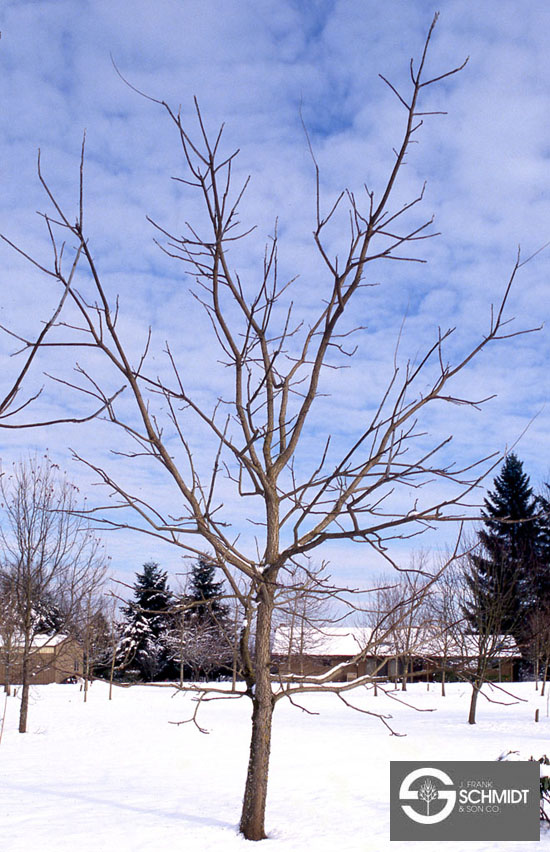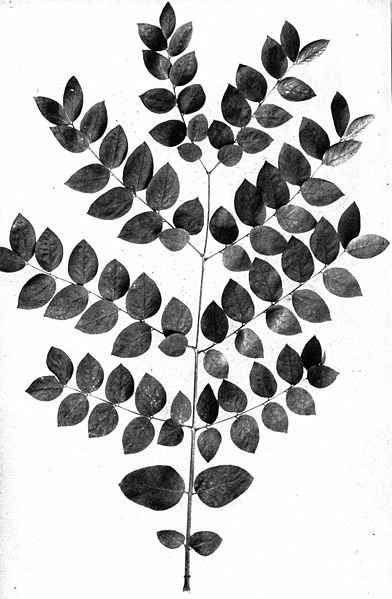| PSC 2620: Woody Trees and Shrub | Course Home | Week 6 |
Gymnocladus dioicus - Kentucky Coffeetree
Plant Viewer
 |
 |
| Coffeetree is a large and upright shade tree. | It has a picturesque branching pattern and form that is best visible during the winter. |
 |
 |
| The leaf is bipinnately compound and can be up to 3 feet in length. | Leathery seed pods appear during summer and ripen to a red-brown color in the fall. |
Plant Description
Gymnocladus dioicus, or Kentucky Coffeetree, is a little used large deciduous tree that grows 60-75 feet high and 2/3 that in width. It has an irregular branching habit that gives it a rugged and picturesque appearance, especially in winter. It has shown the ability to adapt to a wide range of soil conditions, but performs best when given ample moisture.
The dark bark is a ridged and furrowed, with the ridges often appearing wavy or twisting in form. Young branches quickly develop the bark pattern. The large leaves are bipinnately compound and can reach up to 3 feet in length and 2 feet in width. The leaflets are elliptic in shape They are a deep green in color and emerge late in spring. The fall color is inconsistent, but can be a rich yellow color.
Large panicles of creamy green flowers appear in late spring. The individual flowers are small and are not considered an important ornamental feature. In late summer and fall, pea-pod seeds form on the tree. These can very from 5-10 inches, with female trees producing shorter pods. They are pubescent and green during the summer, but ripen to a rich reddish brown in the fall. Young tree do not produce fruit, and on mature trees, large crops of fruit are produced in 2-3 year cycles.
Landscape Use
This interesting tree is a good selection for a shade tree and is also a good choice for a park tree. I would not recommend it for use as a street tree.
Points of interest
It can be quite a messy tree because it drops its leaves, rachises and fruit at different times, meaning multiple clean-ups are needed.